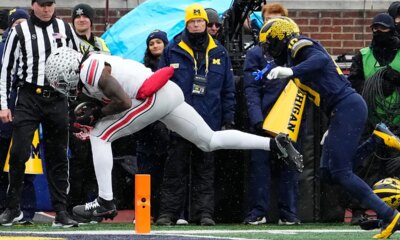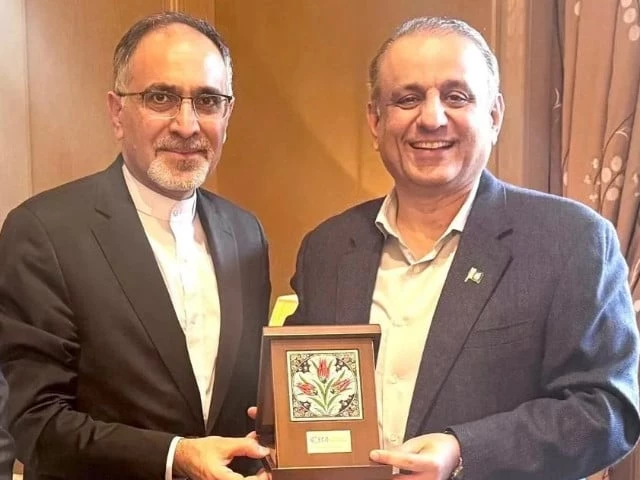Business
Insurance firm Gallagher taps pro athletes for summer internships, preparing them for life off the field

Insurance firm Gallagher is tapping into a new kind of summer intern: professional athletes.
Last year, the insurance giant expanded its internship program to offer positions to pro athletes, giving them a pathway to prepare for life after sports. In return, Gallagher discovered the stars also tend to shine off the field.
“They know what it’s like to work hard and how long that path is to get to success,” said Chris Mead, Gallagher’s chief marketing officer. “They know what it’s like to be part of a team and how to lead one.”
This year Gallagher opened the program to eight members of the National Women’s Soccer League’s Chicago Stars. Leilanni Nesbeth and Chardonnay Curran, a current and former midfielder with the team, respectively, jumped at the opportunity for a paid internship.
“It means a lot for us to be able to get our foot in the door,” Nesbeth said in an interview with CNBC.
“I’ve never had a job outside of soccer,” said Curran. “Being a pro soccer player was my first career, and I’ve never been in a corporate setting.”
Chardonnay Curran, then of the Chicago Stars FC, before a game between Chicago Stars FC and North Carolina Courage at First Horizon Stadium at WakeMed Soccer Park on May 17, 2025, in Cary, North Carolina.
Gregory Ng/isi Photos | Isi Photos | Getty Images
Gallagher started its Partnership Intern Program for athletes in 2024, piloted with four players from the NFL’s Atlanta Falcons.
Over six weeks, participants gain business experience, professional skill development and career mentorship, while also learning the ins and outs of insurance brokerage, sales and corporate culture.
Gallagher, a sponsor of the Chicago NWSL team, tailors its internship program for the athlete participants to accommodate their demanding schedules.
For many, that support is crucial. Pro sports careers can be short and unpredictable, and earnings can vary widely. The average NWSL salary is about $125,000 per season, according to the league.
Gallagher’s goal is to prepare athletes for what comes next.
“We went in there knowing nothing about insurance, and now I could probably bore your head off about RPS,” Nesbeth joked, referencing an industry term meaning “risk placement services.”
Leilanni Nesbeth takes a shot on goal during a game between the Chicago NWSL team and Bay FC at PayPal Park on May 5, 2024 in San Jose, California.
Karen Hickey/isi Photos | Isi Photos | Getty Images
For Curran, it was about changing preconceived notions about the insurance industry.
“After doing the internship, everything I thought about insurance was the exact opposite,” she said.
Curran and the Chicago Stars mutually agreed to part ways days after she spoke with CNBC.
Mead said Gallagher has gone on to hire some of the athlete interns as employees when their playing careers are over.
He said in Europe, the company employs a professional rugby player who is one of its star salesmen.
“There’s a time when the light bulb goes off and they see how celebrating a win on the pitch is no different than celebrating a win after a sale or doing something wonderful for a customer,” Mead told CNBC.
Coverage off the field
Ties between insurance and professional sports are not new.
For years, State Farm has run catchy commercials featuring former New York Giants quarterback Eli Manning, former Indiana Pacers shooting guard Reggie Miller, Kansas City Chiefs QB Patrick Mahomes, Indiana Fever guard Caitlin Clark of the WNBA and a host of others.
On Monday, AIG announced it was becoming the first Fortune 500 company to take a stake in an EFL League Two club, with an investment in Salford City Football Club in the U.K.
Nationwide, an NWSL partner, also runs a similar internship program with league players, offering them a professional development program at the insurance company’s headquarters in Columbus, Ohio.
“Our hope is that the players walk away with new skills and experiences that may serve them now and in their post-playing careers, perhaps back at Nationwide,” said Jim McCoy, vice president of sports marketing for Nationwide.
Business
Private sector data: Over 2 lakh private companies closed in 5 years; govt flags monitoring for suspicious cases – The Times of India

NEW DELHI: The government on Monday said that over the past five years, more than two lakh private companies have been closed in India.According to data provided by Minister of State for Corporate Affairs Harsh Malhotra in a written reply to the Lok Sabha, a total of 2,04,268 private companies were shut down between 2020-21 and 2024-25 due to amalgamation, conversion, dissolution or being struck off from official records under the Companies Act, 2013.Regarding the rehabilitation of employees from these closed companies, the minister said there is currently no proposal before the government, as reported by PTI. In the same period, 1,85,350 companies were officially removed from government records, including 8,648 entities struck off till July 16 this fiscal year. Companies can be removed from records if they are inactive for long periods or voluntarily after fulfilling regulatory requirements.On queries about shell companies and their potential use in money laundering, Malhotra highlighted that the term “shell company” is not defined under the Companies Act, 2013. However, he added that whenever suspicious instances are reported, they are shared with other government agencies such as the Enforcement Directorate and the Income Tax Department for monitoring.A major push to remove inactive companies took place in 2022-23, when 82,125 companies were struck off during a strike-off drive by the corporate affairs ministry.The minister also highlighted the government’s broader policy to simplify and rationalize the tax system. “It is the stated policy of the government to gradually phase out exemptions and deductions while rationalising tax rates to create a simple, transparent, and equitable tax regime,” he said. He added that several reforms have been undertaken to promote investment and ease of doing business, including substantial reductions in corporate tax rates for existing and new domestic companies.
Business
Pakistan’s Textile Exports Reach Historic High in FY2025-26 – SUCH TV

Pakistan’s textile exports surged to $6.4 billion during the first four months of the 2025-26 fiscal year, marking the highest trade volume for the sector in this period.
According to the Pakistan Bureau of Statistics (PBS), value-added textile sectors were key contributors to the growth.
Knitwear exports reached $1.9 billion, while ready-made garments contributed $1.4 billion.
Significant increases were observed across several commodities: cotton yarn exports rose 7.74% to $238.9 million, and raw cotton exports jumped 100%, reaching $2.6 million from zero exports the previous year.
Other notable gains included tents, canvas, and tarpaulins, up 32.34% to $53.48 million, while ready-made garments increased 5.11% to $1.43 billion.
Exports of made-up textile articles, excluding towels and bedwear, rose 4.17%, totaling $274.75 million.
The report also mentioned that the growth in textile exports is a result of improved global demand and stability in the value of the Pakistani rupee.
Business
Peel Hunt cheers ‘positive steps’ in Budget to boost London market and investing

UK investment bank Peel Hunt has given some support to under-pressure Chancellor Rachel Reeves over last week’s Budget as it said efforts to boost the London market and invest in UK companies were “positive steps”.
Peel Hunt welcomed moves announced in the Budget, such as the stamp duty exemption for shares bought in newly listed firms on the London market and changes to Isa investing.
It comes as Ms Reeves has been forced to defend herself against claims she misled voters by talking up the scale of the fiscal challenge in the run-up to last week’s Budget, in which she announced £26 billion worth of tax rises.
Peel Hunt said: “Following a prolonged period of pre-Budget speculation, businesses and investors now have greater clarity from which they can start to plan.
“The key measures were generally well received by markets, particularly the creation of additional headroom against the Chancellor’s fiscal rules.
“Initiatives such as a stamp duty holiday on initial public offerings (IPOs) and adjustments to the Isa framework are intended to support UK capital markets and encourage investment in British companies.
“These developments, alongside the Entrepreneurship in the UK paper published simultaneously, represent positive steps toward enhancing the UK’s attractiveness for growth businesses and long-term investors.”
Ms Reeves last week announced a three-year stamp duty holiday on shares bought in new UK flotations as part of a raft of measures to boost investment in UK shares.
She also unveiled a change to the individual savings account (Isa) limit that lowers the cash element to £12,000 with the remaining £8,000 now redirected into stocks and shares.
But the Chancellor also revealed an unexpected increase in dividend tax, rising by 2% for basic and higher rate taxpayers next year, which experts have warned “undermines the drive to increase investing in Britain”.
Peel Hunt said the London IPO market had begun to revive in the autumn, although listings activity remained low during its first half to the end of September.
Firms that have listed in London over recent months include The Beauty Tech Group, small business lender Shawbrook and tinned tuna firm Princes.
Peel Hunt added that deal activity had “continued at pace” throughout its first half, with 60 transactions announced across the market during that time and 10 active bids for FTSE 350 companies, as at the end of September.
Half-year results for Peel Hunt showed pre-tax profits jumped to £11.5 million in the six months to September 30, up from £1.2 million a year earlier, as revenues lifted 38.3%.
Peel Hunt said its workforce has been cut by nearly 10% since the end of March under an ongoing savings drive, with full-year underlying fixed costs down by around £5 million.
Steven Fine, chief executive of Peel Hunt, said: “The second half has started strongly, with the group continuing to play leading roles across both mergers and acquisitions and equity capital markets mandates.”
-

 Sports1 week ago
Sports1 week agoWATCH: Ronaldo scores spectacular bicycle kick
-

 Entertainment1 week ago
Entertainment1 week agoWelcome to Derry’ episode 5 delivers shocking twist
-

 Politics1 week ago
Politics1 week agoWashington and Kyiv Stress Any Peace Deal Must Fully Respect Ukraine’s Sovereignty
-

 Business1 week ago
Business1 week agoKey economic data and trends that will shape Rachel Reeves’ Budget
-

 Tech6 days ago
Tech6 days agoWake Up—the Best Black Friday Mattress Sales Are Here
-

 Politics1 week ago
Politics1 week ago53,000 Sikhs vote in Ottawa Khalistan Referendum amid Carney-Modi trade talks scrutiny
-

 Fashion1 week ago
Fashion1 week agoCanada’s Lululemon unveils team Canada kit for Milano Cortina 2026
-

 Tech1 day ago
Tech1 day agoGet Your Steps In From Your Home Office With This Walking Pad—On Sale This Week


1729471601-0/image-(8)1729471601-0-640x480.webp)












